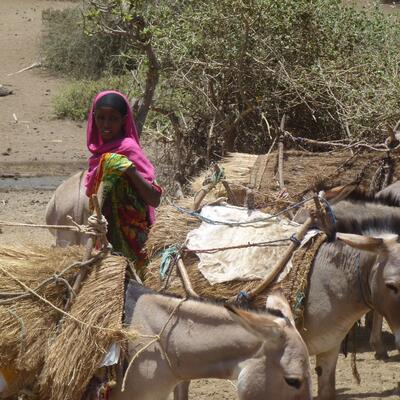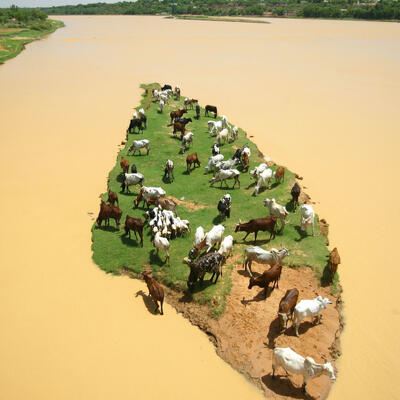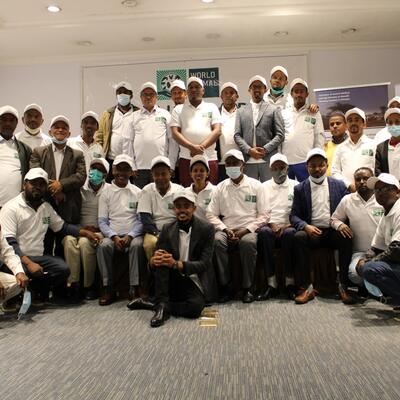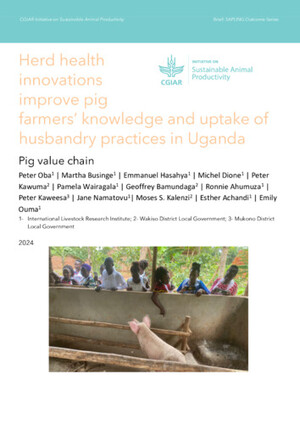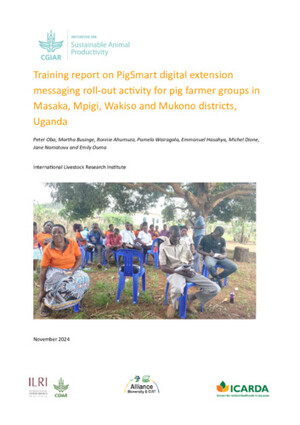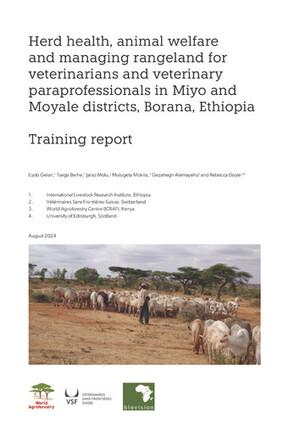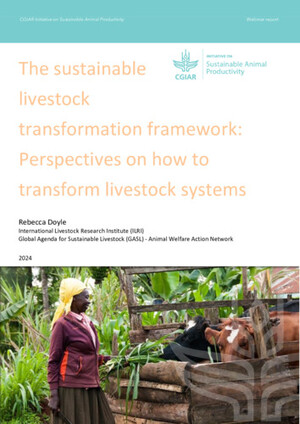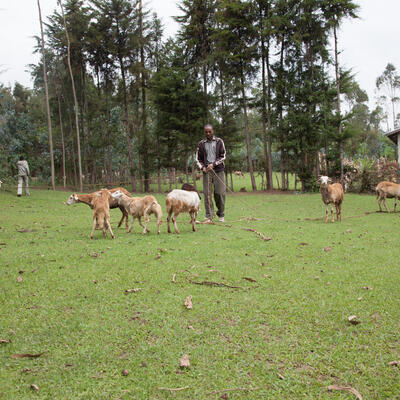
Former ABCF fellow’s research is conserving and improving indigenous goats in the Democratic Republic of Congo
Livestock farming is an important source of income in rural households in African countries. Goats, which were one of the first animals to be domesticated in the continent, are especially important in the Democratic Republic of Congo (DRC) where they are kept by 75% of the rural population and provide up to 72% of the household income through the sale of meat, milk and live animals.
More than 4 million indigenous goats are kept by farmers in the DRC. These animals mainly fall under three local breeds locally known as ‘chèvre moyenne du Congo’ or the small goat of Congo; ‘chèvre du Kasai’ or Kasai goat and the ‘chèvre de Bandundu’ or dwarf goat of Congo; which are spread across all three agro-ecological zones of the country. As in eastern Africa, goats in the DRC are raised in marginal areas where crop production is low.
Congolese Patrick Baenyi, a former Africa Biosciences Challenge Fund (ABCF) fellow at the Biosciences eastern and central Africa-International Livestock Research Institute (BecA-ILRI) Hub aims to improve the livelihoods of rural households in his country by conserving and improving indigenous goats through a better understanding of their genetic diversity and population composition.
‘Due to uncontrolled livestock movement across borders, exotic goat breeds have been introduced and cross-bred with the three Congolese indigenous goat populations,’ says Baenyi. He notes that ‘these practices increase the risk of disappearance of resilient and adapted local breeds.’ To mitigate this risk, the locally adapted goat breeds in the country need to be characterized, conserved and used sustainably. ‘Characterization of local breeds gives vital insights and a clearer prospective on the population structure that will assist in decision-making of future breeding programs,’ says Baenyi.
Baenyi’s research on ‘Haplotype analysis of the mitochondrial DNA d-loop region’ has revealed the maternal origin and historical dynamics of the indigenous goat populations in the east and west of DRC. Using animal mitochondrial DNA (mtDNA) analysis, Baenyi’s study has assessed the haplotype (combination of alleles for different polymorphisms that occur on the same chromosome; genetic determinat) diversities and population dynamics of the Kasai goat, small goat and dwarf goat. Animal mitochondrial DNA evolves faster than nuclear genetic markers; therefore it represents a good informative region for the study of phylogenetic and evolutionary biology. This tool also allows for faster examination of the relatedness of populations and has become popular in biogeographic and anthropologic studies of goats, sheep and chicken.
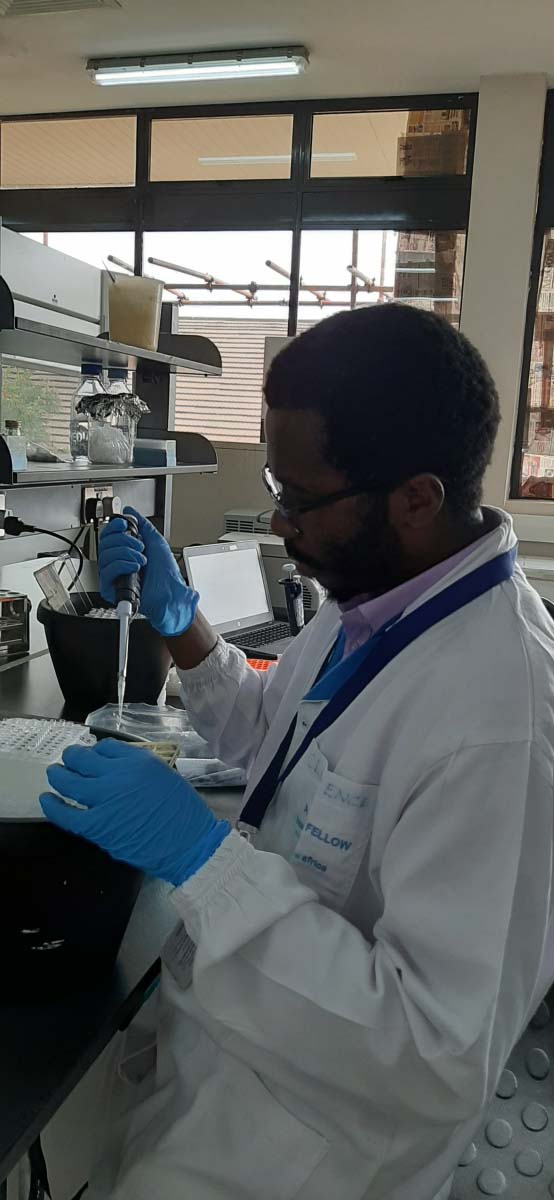
Baenyi extracts DNA from goat blood at BecA-ILRI Hub
His research focused on goats in South Kivu Province (eastern region); Kinshasa, the country’s capital; (western region); and Tshopo Province (northeast equatorial forest). He chose South Kivu because of its proximity to Tanzania, Rwanda and Burundi where commercial transactions and animal exchanges frequently occur across borders; and Tshopo was chosen due to its geographical location and its proximity to the equatorial forest affects goat’s diversity, management, and productivity; and Kinshasa due to the intense animal exchanges and commercial transactions that occur between the capital and surrounding regions such as Bandundu, Kasai central, and Congo central. These three regions represent the country’s three agro-ecological zones.
A total of 568 sites that generated 192 haplotypes were assessed, informing the genetic diversity and population structure of the three studied indigenous goat populations. He used the participative method to collect information related to the goat production system by creating a structured survey and interviewed smallholder farmers and collected blood samples from goats with the help of an experienced veterinarian.
His research observed high levels of genetic diversity and weak genetic differentiation between goat populations in the haplogroup A from the samples collected in the three agro-ecological zones. Genetic expansion was also detected in the three studied goat populations. These results showed that goat populations in the DRC are currently not under any threat of extinction and that one population can be reconstituted from another. The results also provided basic information that can be used in the conservation and improvement process of the studied indigenous goats.
‘Further analysis on the signatures of selection of candidate genes that are associated with traits of economic interest and genome-wide association studies are need to give more information toward the conservation and improvement of indigenous goats in east and west of DR Congo,’ adds Baenyi. This information will include the genetic potential of the indigenous goats to facilitate genomic and marker-assisted selections.
Next, he hopes to carry out a genome-wide association study to assess the link between the genetic potential and related phenotypic traits of the indigenous goats to know their genetic potential. Phenotypic markers that will be used as on-farm selection tools will be developed to assist and facilitate the selection of performant animals at the farm level. He plans to keep the selected animals in stations for more in-depth research to develop improved goat breeds more adapted to the local environment.
‘My time at BecA-ILRI Hub built my capacity in research, scientific communication and overall self-confidence in my abilities. I also benefited from the bioinformatic skills I acquired and developed, and I learned how scientific research can impact the right target beneficiaries and contribute to the development of a region. The mentorship with my supervisors that started during the fellowship has continued,’ he says.

Baenyi gives a progress report presentation to BecA-ILRI Hub staff and fellows at ILRI, Nairobi
Baenyi is about to defend his PhD thesis in genetics and animal breeding at the University of Nairobi. Finalizing his PhD will change his position from assistant lecturer and assistant researcher to lecturer and researcher at his home institution, the Université Evangélique en Afrique in South Kivu.
While at the BecA-ILRI Hub, Baenyi was supervised by the Hub’s Roger Pellé and by Getinet Getinet Tarekegn Mukuriaw, who is from the Department of Animal Production and Technology at Bahir Dar University, in Ethiopia, as well as the Department of Animal Breeding and Genetics at the Swedish University of Agricultural Sciences, in Uppsala.





